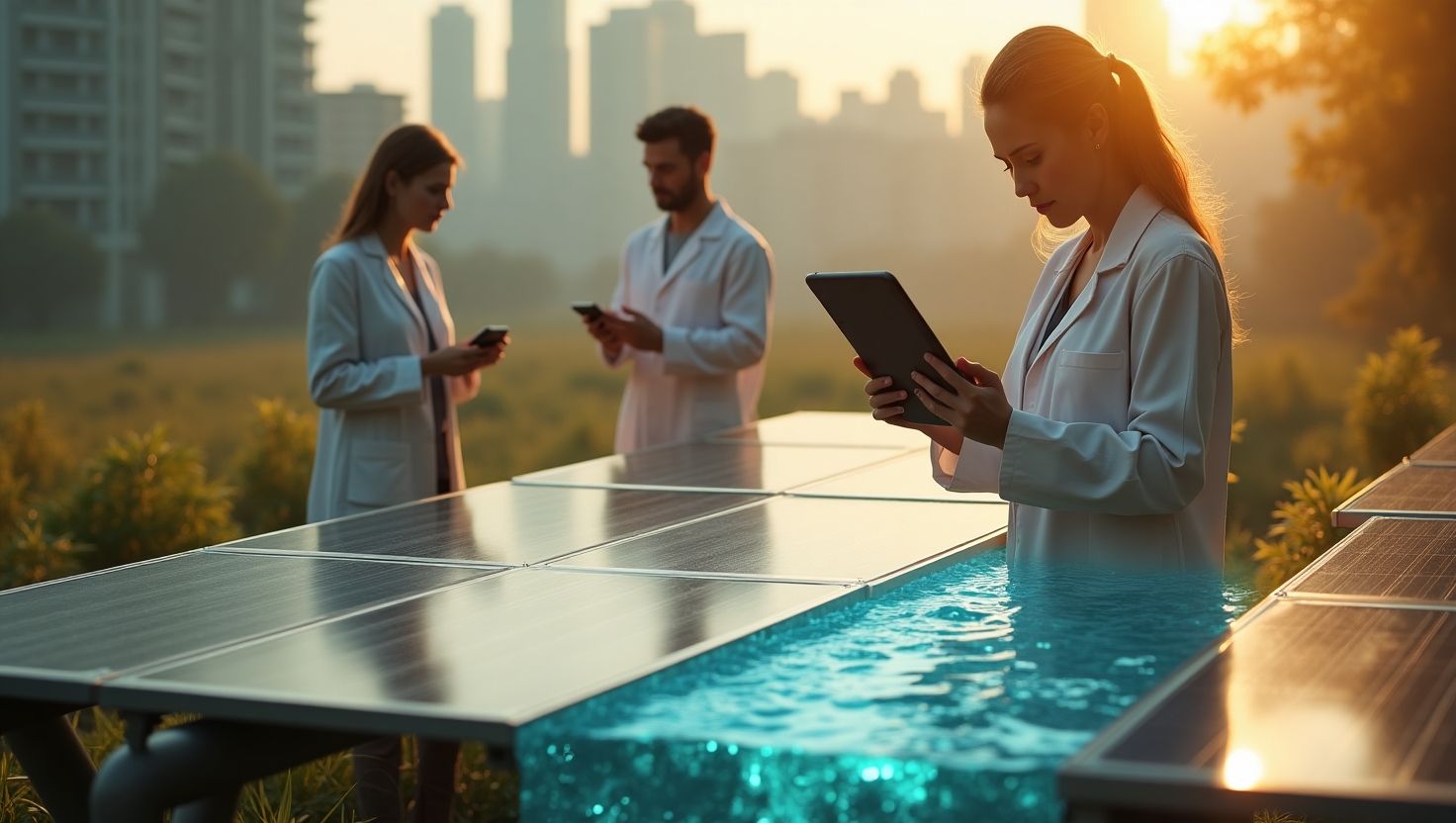Breakthrough Solar Cooling Technology: How Stagnant Water Layers Slash Panel Heat Up to 8.2°C
Introduction: The Overheating Crisis in Solar Energy
Solar panels lose efficiency by 0.5% per °C above 25°C. This heat penalty can slash energy output by 15-28%. Users face higher costs and lower returns.
Rising global temperatures amplify PV inefficiency. Traditional setups struggle in hot climates. Urgent solar cooling solutions are essential.
Indian researchers tested a stagnant water layer (SWL) technique. It promises big gains in PV efficiency. Seawater cooling fits coastal areas well.
Background: Why Solar Panels Overheat and Wastage
Heat speeds electron recombination in PV cells. This cuts voltage and power output. Panels often hit 60-70°C in sunlight.
Active cooling uses fans or pumps. These add high costs and maintenance needs. Passive options like heat sinks offer limited relief.
No prior methods use inert water layers safely. They avoid contact with frame junction boxes. Off-grid solar systems suffer most without proactive cooling.
Trend: Innovation in Water Layer Cooling for PV Modules
The core tech seals a 1 cm water bed on panels. Transparent glass strips hold the layer. It boosts PV efficiency without electrical risks.
Researchers tested seawater, tap water, and desalinated water. This triple-validation covered real-world scenarios. Results showed strong temperature drops.
| Water Type | Temp. Drop | Energy Boost | CO₂ Reduction |
|—————-|—————-|——————|——————-|
| Desalinated | 8.2°C | 28.3% | 44.2% higher over 20 years |
| Seawater | 7.4°C | 14.9% | No salt deposition |
| Tap Water | 7.2°C | 16.6% | Moderate consumption |
Innovation ensures no water touches frames. Water layer cooling drives these gains. It enhances off-grid solar performance via Indian Institute of Petroleum and Energy study.
Insight: Economic & Environmental Trade-offs
Desalinated water uses 68mL/Wh but has a high production footprint. Seawater needs 97mL/Wh, ideal for coastal sites. Tap water falls in between at 106mL/Wh.
Seawater cooling lowers LCOE by 12-18% yearly. This suits maritime regions. Costs drop without complex setups.
Desalinated setups mitigate 44.2% more CO₂ over 20 years. Salt risks vanish with non-contact design. \”A simple, low-cost method to boost PV immersion cooling without fluid contact,\” notes the research from pv magazine Australia.
Hidden risks include evaporation. Quality design resolves them. Overall, benefits outweigh drawbacks.
Forecast: Scaling Stagnant Water Coolers for Global Deployment
By 2025-2030, coastal and desert areas will adopt SWL. India, UAE, and Southeast Asia lead off-grid solar farms. Tech scales fast.
Pair SWL with perovskite cells for 30%+ efficiency in heat. This combo defies extreme conditions. Innovation drives adoption.
Challenges include urban water logistics. Durability needs UV-resistant strips. Solutions are emerging.
Solar cooling startups eye 5MW pilots by Q4 2025. Investments pour in. Global deployment transforms PV efficiency.
Call to Action: Heat Up Your Solar ROI—Today
Audit your solar array for hotspots. Overheating cuts earnings by 20%. Act now to identify issues.
Try SWL cooling with UV-stable strips. Source them via Andhra University collaborators. Boost your setup easily.
Download open-source blueprints for DIY kits from IIPE repository. Reduce heat and raise returns. Start cooling smarter.
FAQ
Q: How much does solar panel cooling improve efficiency?
A: Up to 28.3% energy boost for desalinated water cooling (Indian Institute of Petroleum study).
Q: Is seawater cooling safe for PV?
A: Yes—no salt deposition observed due to non-contact design.
For more on solar cooling innovations, check pv magazine Australia. Learn about related off-grid solar tech at Australian Renewable Energy Agency.
